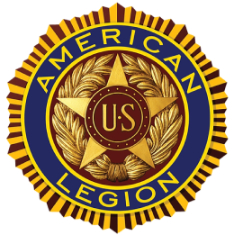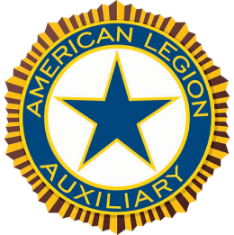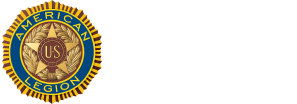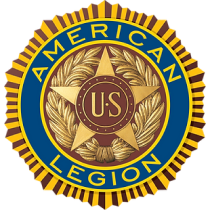About Us
Our Mission
The American Legion was chartered and incorporated by Congress in 1919 as a patriotic veterans organization devoted to mutual helpfulness. It is the nation’s largest wartime veterans service organization, committed to mentoring youth and sponsorship of wholesome programs in our communities, advocating patriotism and honor, promoting strong national security, and continued devotion to our fellow service members and veterans.
Hundreds of local American Legion programs and activities strengthen the nation one community at a time. American Legion Baseball is one of the nation’s most successful amateur athletic programs, educating young people about the importance of sportsmanship, citizenship and fitness. The Heroes to Hometowns program connects local Legionnaires with recovering wounded warriors and their families, providing a variety of support activities. The Legion raises millions of dollars in donations at the local, state and national levels to help veterans and their families and to provide college scholarship opportunities.
The American Legion is a nonpartisan, not-for-profit organization with great political influence perpetuated by its grass-roots involvement in the legislation process from local districts to Capitol Hill. Legionnaires’ sense of obligation to community, state and nation drives an honest advocacy for veterans in Washington. The Legion stands behind the issues most important to the nation’s veterans community, backed by resolutions passed by volunteer leadership.
The American Legion’s success depends entirely on active membership, participation and volunteerism. The organization belongs to the people it serves and the communities in which it thrives.
History
The American Legion was chartered by Congress in 1919 as a patriotic veterans organization. Focusing on service to veterans, servicemembers and communities, the Legion evolved from a group of war-weary veterans of World War I into one of the most influential nonprofit groups in the United States. Membership swiftly grew to over 1 million, and local posts sprang up across the country. Today, membership stands at over 2.4 million in 14,000 posts worldwide. The posts are organized into 55 departments: one each for the 50 states, along with the District of Columbia, Puerto Rico, France, Mexico and the Philippines.
Over the years, the Legion has influenced considerable social change in America, won hundreds of benefits for veterans and produced many important programs for children and youth. Following is a chronology of significant dates in Legion history:
March 15-17
Members of the American Expeditionary Force convene in Paris for the first American Legion caucus.
May 8-10
St. Louis Caucus. "The American Legion" is adopted as the organization's official name. The Legion's draft preamble and constitution are approved.
June 9
The National Executive Committee adopts the Legion emblem.
September 16
Congress charters The American Legion.
November 10-12
First Legion convention convenes in Minneapolis. The Constitution and preamble are adopted. Delegates vote 361-323 to locate the Legion's national headquarters in Indianapolis, instead of Washington. A resolution is passed in support of Boy Scouts of America. Today, the Legion is the chartering agency for more than 1,700 Scouting units made up of approximately 64,000 youths.
Legion Family
Together, members of The American Legion, The American Legion Auxiliary and the Sons of The American Legion make up what is known as The Legion Family.
All three organizations place high importance on preserving our American traditions and values, improving the quality of life for our nation’s children, caring for veterans and their families, and perhaps most importantly, teaching the fundamentals of good citizenship.

The American Legion
The American Legion was chartered by Congress in 1919 as a patriotic, war-time veterans' organization, devoted to mutual helpfulness. It is a community-service organization which now numbers nearly 3 million members, men and women, in nearly 15,000 American Legion posts worldwide. These posts are organized into 55 departments -- one each for the 50 states, the District of Columbia, Puerto Rico, France, Mexico, and the Philippines.
The American Legion's national headquarters is in Indianapolis, with additional offices in Washington, DC. In addition to thousands of volunteers serving in leadership and program implementation capacities in local communities and the Legion's standing national commissions and committees, the national organization has a regular full-time staff of about 255 employees.

The American Legion Auxiliary
Founded in 1919, The American Legion Auxiliary has nearly 1 million members from all walks of life. The Auxiliary administers hundreds of volunteer programs, gives tens of thousands of hours to its communities and to veterans, and raises millions of dollars to support its own programs, as well as other worthwhile charities familiar to Americans. It is all accomplished with volunteers.
While originally organized to assist The American Legion, the Auxiliary has achieved its own unique identity while working side-by-side with the veterans who belong to The American Legion. Like the Legion, the Auxiliary’s interests have broadened to encompass the entire community.
The American Legion Auxiliary is made up of the male and female spouses, grandmothers, mothers, sisters, and direct and adopted female descendants of members of The American Legion. Through its nearly 10,500 units located in every state and some foreign countries, the Auxiliary embodies the spirit of America that has prevailed through war and peace. Along with The American Legion, it solidly stands behind America and its ideals.

The Sons of The American Legion
Founded in 1932, Sons of The American Legion exists to honor the service and sacrifice of Legionnaires.
S.A.L. members include males of all ages whose parents or grandparents served in the U.S. military and were eligible for American Legion membership. Members of The American Legion, American Legion Auxiliary and Sons of The American Legion comprise the Legion Family, which has a combined membership of nearly 4.2 million.
Elements of The American Legion Emblem
“There shines the Emblem of The American Legion, it is your badge of distinction, honor and service. It stands for God and Country, and the highest rights of man. Of its several parts, each has a meaning.”
The rays of the sun
The rays of the sun form the background of our proud emblem and suggests the Legion's principles will dispel the darkness of violence and evil.

The Wreath
The wreath forms the center, in loving memory of those brave comrades who gave their lives in the service of the United States that liberty might endure.

The Star
The star, victory symbol of World War I, also symbolizes honor, glory and constancy. The letters "U.S." leave no doubt as to the brightest star in the Legion's star.

Outer rings
The larger of two outer rings stands for the rehabilitation of our sick and disabled comrades. The smaller inside ring denotes the welfare of America's children.

Inner rings
The rays of the sun form the background of our proud emblem and suggests the Legion's principles will dispel the darkness of violence and evil.

American Legion
The words American Legion tie the whole together for truth, remembrance, constancy, honor, service, veterans affairs and rehabilitation, children and youth, loyalty, and Americanism.

Preamble to the Constitution of The American Legion
FOR GOD AND COUNTRY WE ASSOCIATE OURSELVES TOGETHER FOR THE FOLLOWING PURPOSES:
To uphold and defend the Constitution of the United States of America; to maintain law and order; to foster and perpetuate a 100-percent Americanism; to preserve the memories and incidents of our associations in all wars; to inculcate a sense of individual obligation to the community, state and nation; to combat the autocracy of both the classes and the masses; to make right the master of might; to promote peace and good will on earth; to safeguard and transmit to posterity the principles of justice, freedom and democracy; to consecrate and sanctify our comradeship by our devotion to mutual helpfulness.”
Each of the 10 clauses of the Preamble, though brief, has a world of meaning.
FOR GOD AND COUNTRY, WE ASSOCIATE OURSELVES TOGETHER...
This is the introduction. It declares that The American Legion recognizes the influence of Almighty God in all worthwhile endeavors-and declares the allegiance of Legionnaires to both God and Nation. First things have been put first. All that follows is in conformity.
TO COMBAT THE AUTOCRACY OF CLASSES AND MASSES...
This clause places the Legionnaire on the side of right in opposing autocracy by either class or mass when this threatens. In a democracy such as ours, composed as it is of all nationalities, races, creeds and economic groups, there are bound to both classes and masses. Indeed, the masses are composed of classes-but all groups within the mass must feel assured that in this nation, reason and fairness will prevail in all human activities and relations. There must be no hyphenated Americans-just Americans all.
TO MAINTAIN LAW AND ORDER...
Without law and order, liberty would become license. Law and order protect our pursuit of happiness, one of our God-given rights. Members of The American Legion served in wars to uphold law and order among nations. It is just as important to maintain the due processes of law in our domestic affairs. It binds Legionnaires to obey the laws of the land and to support the constituted authorities in enforcing those laws. It means the citizen must never take the law into his own hands!
TO FOSTER AND PERPETUATE A 100 PERCENT AMERICANISM...
Americanism is the gist of the American ideals of freedom, justice, individual rights and unfenced-in opportunities. It embraces all the freedoms we cherish and all the rights that are guaranteed to us. It is the very opposite of hatred, bigotry and intolerance. Americanism is the creed that has blazed the world-wide trail for justice, fair play, decency, belief in God, private enterprise, universal education, and progress in all human endeavors. It puts a premium on the virtues of loyalty, patriotism, hard work and thrift.
TO INCULCATE A SENSE OF INDIVIDUAL OBLIGATION TO THE COMMUNITY, STATE AND NATION...
Always interested in building a better nation, the founders of The American Legion believed that such building must start first with the individual in his own community. So they made it one of the cardinal principles of The American legion to inculcate that sense of personal obligation to the community, state and nation into the individual citizen. That means educating the citizen-young, old and future-in his and her responsibility to be active in making the hometown a better place in which to live, in discharging the duty of voting in elections, in paying taxes promptly, in contributing to community chest funds and to blood banks. The word “inculcate” means “to impress by frequent admonitions” and “to enforce by frequent repetitions.” Like the duties themselves, the reminders that they remain to be carried forward, are never finished.
TO COMBAT THE AUTOCRACY OF CLASSES AND MASSES...
This clause places the Legionnaire on the side of right in opposing autocracy by either class or mass when this threatens. In a democracy such as ours, composed as it is of all nationalities, races, creeds and economic groups, there are bound to both classes and masses. Indeed, the masses are composed of classes-but all groups within the mass must feel assured that in this nation, reason and fairness will prevail in all human activities and relations. There must be no hyphenated Americans-just Americans all.
TO MAKE RIGHT THE MASTER OF MIGHT...
All wars from the veterans of which The American Legion draws its membership were started by dictators who wanted their might to be the right. If human freedom is not to perish from the earth, right must always be master of might. The rights of small nations must be protected against the tyranny that powerful neighbors may seek to impose on them-just as the rights of minorities in our society must be protected and respected. Our belief in enthroning right over might is the main essence of our ideological conflict with Communism today. Legionnaires are pledged by this clause always to stand with the right, protect the weak and preserve the liberties of the individual. This concept is the basis of The American Legion’s continued advocacy of a strong national preparedness so as to achieve the ideal situation that right will be backed by adequate might.
TO PROMOTE PEACE AND GOOD WILL ON EARTH...
Until all the world becomes a good neighborhood, Legionnaires must continue the effort to promote peace and good will on earth. It is in pursuance of this founding ideal that The American Legion has supported from the beginning and seek to strengthen the United Nations organization. Obliquely, The American Legion also contributes to this ideal by firmly supporting a strong national defense to discourage breaking of the peace by aggressor.
TO SAFEGUARD AND TRANSMIT TO POSTERITY THE PRINCIPLES OF JUSTICE, FREEDOM AND DEMOCRACY...
On this ideal of safeguarding and transmitting to posterity the principles of justice, freedom and democracy, all of the youth-training programs of The American Legion are built. All Americans can be proud that in our international relations we have tried to live by the golden rule, the mark of justice. We have granted to others, as we prize it ourselves, the great boon of freedom. Through the Monroe Doctrine, we call a halt to foreign imperialism in the Western Hemisphere. We gave freedom to the Philippines. These principles are part of the American heritage. Legionnaires are pledged to protect and preserve that heritage.
TO PARTICIPATE IN AND CONTRIBUTE TO THE ACCOMPLISHMENT OF THE AIMS AND PURPOSES OF THE AMERICAN LEGION*...
This clause is stated by the Auxiliary, where they pledge their full strength to the support of The American Legion, and affirm its character as an auxiliary to the Legion. It has always been faithful to this pledge, never developing programs or policies of its own, but directing all of its activities towards the “accomplishment of the aims and purposes of The American Legion”.
TO CONSECRATE AND SANCTIFY OUR ASSOCIATION BY OUR DEVOTION TO MUTUAL HELPFULNESS...
It marked a new concept in America-a concept that made The American Legion the greatest force for social betterment in all the history of the United States. Let us be factual and examine this.
At the close of World War I, America was just emerging from its lusty era of rugged individualism. It was an era when the individual hammered out his own destiny and progress with little or no help from the government. An honest facing of the facts brings out that American society was then a cold society insofar as any organized public hands of helpfulness were concerned. The individual who fell upon evil times was left to private charity which meant mostly the churches and the Salvation Army. There were no public resources or services to help the unfortunates.
When the veterans of World War I came marching home, they found the nation utterly unprepared to care for the combat casualties of the war. The wounded, the shell-shocked and the sick were lodged in poor houses, jails, asylums or what-have-you.
Veterans of World War I were much more closely knit than those of World War II. They trained in the same camps, fought on the one great front. Those who came home unscarred were appalled by the plight of their less fortunate comrades. They felt a concern for them and their dependents which was a new and dramatic action aspect to what the country had known as friendship. This concern formed the bond among the charter members of The American Legion and gave them a great and noble cause to fight for-the adequate care and protection of their disabled comrades and dependents, the war widows and orphans.
They faced a monumental task. Laws had to be drafted and enacted by the Congress to provide compensation for the war-handicapped, to build hospitals and to get protection for the widows and orphans upon whom the war had laid its heaviest and cruelest hand.
The American Legion wrote such laws, had them introduced in the Congress, went out over the land to arouse the conscience of the people of America and mobilize support for its legislative aims. It did both with a sacrificial fervor that overcame all obstacles.
The Congress enacted the laws, it provided the administrative machinery, it appropriated the funds, it built hospitals. Then to bring about a single responsibility for the carrying out of all veteran laws and to achieve a unification of these government services, The American Legion put through Congress the legislation to create the Veterans Bureau which has become the Veterans Administration of today. Over the years, a great network of government hospitals was built and a great structure of veteran legislation enacted which made the American veterans the best cared for on earth. The rehabilitation program of The American Legion for the World War I veteran brought about in its successful development a great awakening of social responsibility in America.
When the New Deal Program was being developed, the government planners took a look at what The American Legion, through its vast rehabilitation program, had done for the veteran of World War I and they decided to do the same thing for all American people.
So out of the rehabilitation brain child of The American Legion, there came the Social Security System with its retirement benefits and old age assistance programs for all the people. The planners took a look at The American Legion program of temporary emergency aid to needy children of veterans and there was born-with the support of Legionnaires-the state and federal program of aid to dependent children-all children.
This is how we can hail The American Legion today as an unparalleled force in these United States for social betterment. American Legion concepts and its ideal of devotion to mutual helpfulness warmed up the whole social climate of America. Today, America is extending its helpful hands all over the world through our assistance programs of foreign aid.
It all came about because the veterans of World War I came home enriched with wonderful ties of friendship and gave those ties a meaning by consecrating them to the ideal of mutual helpfulness.
The American Legion Preamble has been the beacon light of The American Legion for more than 90 years. It has been amended only once in all that time. That amendment consisted of adding the letter “S” to the word “war.” It makes the Preamble read today “Great Wars,” so as to embrace all wars.
Post Officers
Legionnaires
Commander
John Martin
Senior Vice Commander
John Nelson
Junior Vice Commander
Dan Dubreuil
Adjutant/Judge Advocate
Keith Andrews
Finance Officer
Ronald Meltzer
Chaplain
Susan Leblanc
Chaplain
TBD
Sergeant-at-Arms
TBD
Executive Board
Susan Leblanc, Gerry Corbett, Neil Feugill (Alternate)
Auxiliary
Madam President
TBD
Senior Vice President
TBD
Junior Vice President
TBD
Treasurer
TBD
Secretary
TBD
Chaplain
TBD
Historian
TBD
Sergeant-at-Arms
TBD
Membership Chairperson
TBD
Poppy Chairperson
TBD
Fundraising Chairperson
TBD
Sons of the American Legion
Commander
TBD
Senior Vice Commander
TBD
Junior Vice Commander
TBD
Adjutant
TBD
Finance Officer
TBD
Chaplain
TBD
Sergeant-at-Arms
TBD



